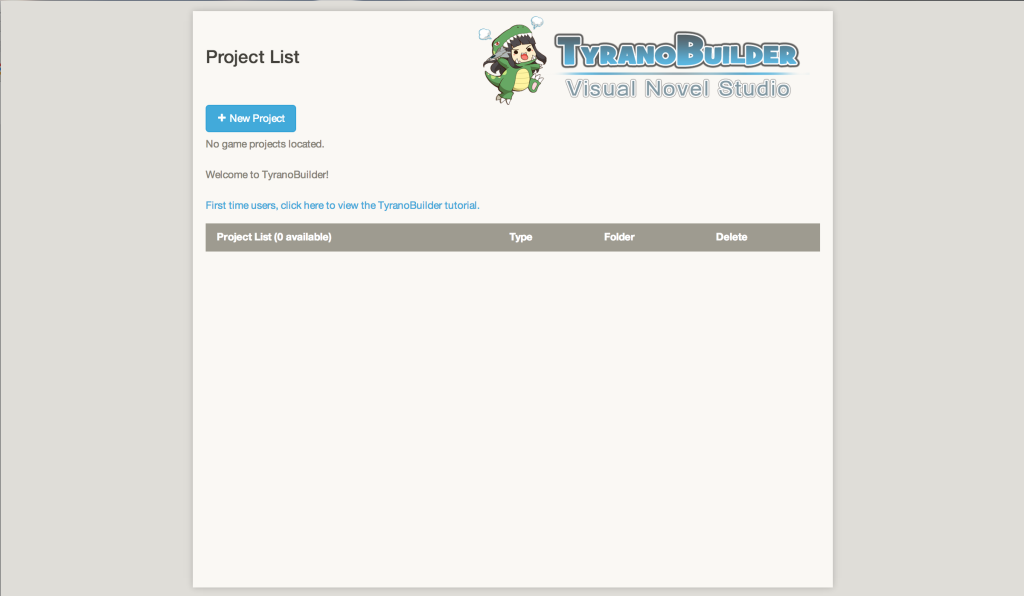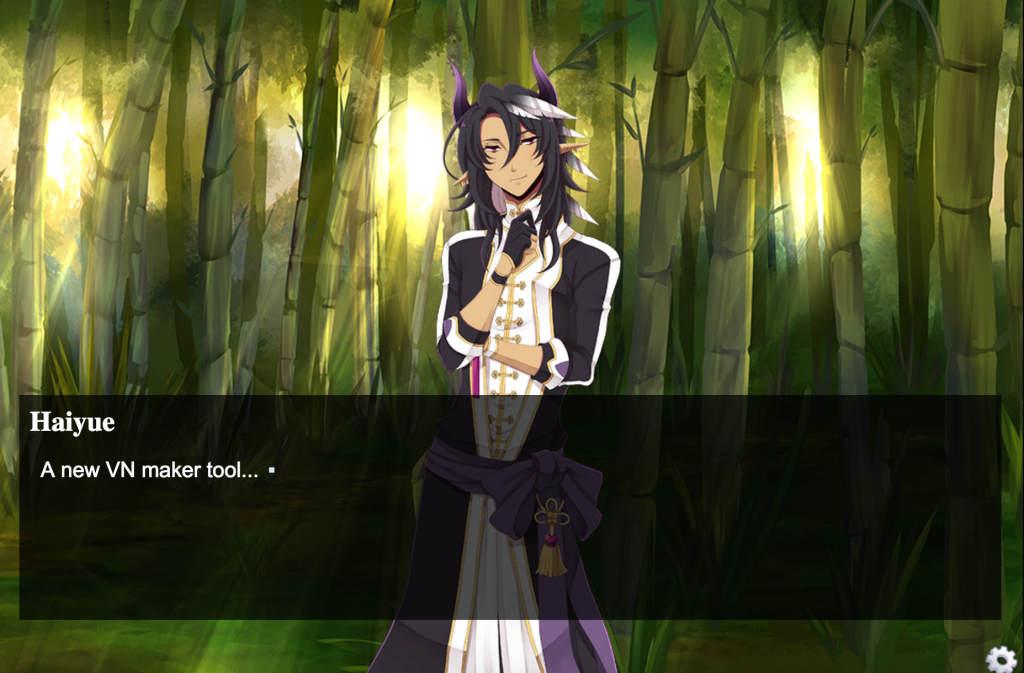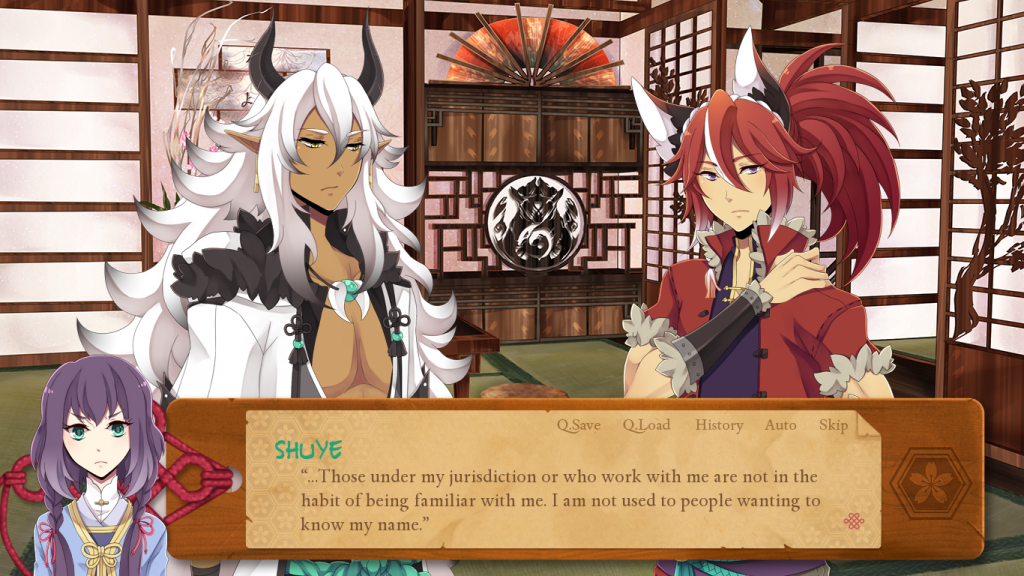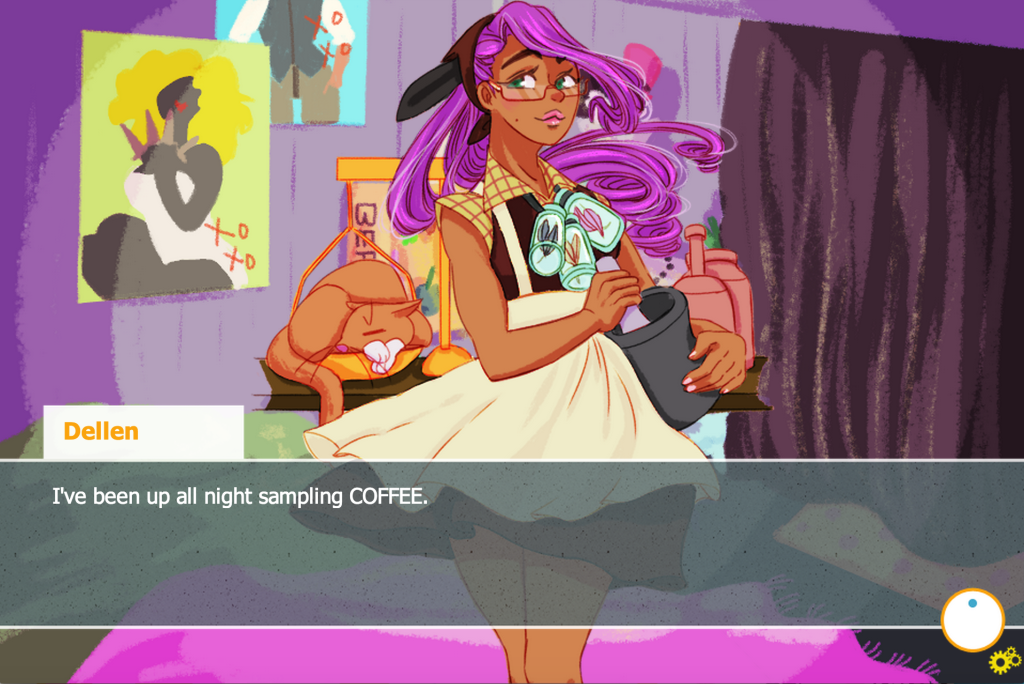Who doesn’t love visual novels? It seems like everyone is hot on the genre these days, with more and more titles being localized into English and events such as the International Love Ultimatum Jam making visual novels, particularly those of the romance variety, increasingly visible. There are even some folks who would like to take that love for visual novels one step further to make their own, which is where the recently-released engine TyranoBuilder comes in. Touting an easy to use interface, the engine has large shoes to fill considering its competition, Ren’Py, is available for free and has been the go-to engine for western visual novel developers for years. Does TyranoBuilder bring enough to the table to make it worth the $14.99 price tag, or does the sweet price of free reign supreme?
For this review, I wanted to get as much comparison between Ren’Py and TyranoBuilder as possible, especially considering Ren’Py is already the standard visual novel engine. However, I, like many, have no experience making visual novels, and this is also an important angle to consider when looking at the accessibility of an engine. As such, I’ve decided to combine the best of both worlds! For this review, I’ve teamed up with indie game developer Lorelei Nguyen, who is programming the upcoming English otome game Spirit Parade using Ren’Py. While I offer my impressions from the viewpoint of a newcomer to game development, her experience with Ren’Py offers some really insightful comparisons of the two visual novel engines!

Anne
My first impression of TyranoBuilder was that everything was laid out very neatly, however, it was essential to go through the online tutorial in order to learn the basic functions to code a simple game. There’s no real “figuring things out as you go” element here. There is a button at the bottom that gives a short explanation of what each item does, but it’s your job to read through the tutorial to figure out how everything goes together. After taking about one hour to follow the tutorial, I was able to make a very short and simple visual novel, complete with selectable choices! That was certainly rewarding, as someone who has never coded anything outside of Twine. One feature that stood out in particular was the ability to see all of the game assets within the program, so you don’t need to remember each and every background or character file name.
Very soon, however, I began to notice that I couldn’t find features you’d expect from a visual novel engine. How do you implement a text skip option, for example? For games that have multiple routes, the ability to fast forward through text that has already been read is essential. During my time with the program, I figured I shouldn’t pass judgement on the seeming lack of these options too quickly, as I thought perhaps I just needed to dig around a little further. However, the lack of Linux support, though it’s not something I personally use, seemed like a rather large negative when compared with Ren’Py.

Lorelei
[Note: I let Lorelei really run with this one, because she had so many interesting things to say!]
When I first started using Ren’Py, I had almost no computer programming experience. I took AP Computer Science in high school as a junior (we learned Java), but I got a C in the course and by the time I started using Ren’Py it had been almost 4 years since then, so I didn’t remember a thing. The only other coding I was proficient in at the time was HTML/CSS and even that was on a pretty basic level. So while some might argue that everyone’s a programmer/has the potential to be a programmer, I was definitely a beginner and complete newbie in the world of game development when I picked up Ren’Py for the first time. It took me a day to figure out the basics, then after a week or two I was already coding a pretty hefty game with relative ease. Since then I’ve branched out a lot and from time to time it takes me a few days to figure out how to code something new in Ren’Py.
Overall, I’d say that TyranoBuilder still has a very long way to go. All the buttons and lack of documentation makes it pretty intimidating right out of the box. It would be useful for simple games with few characters and not a lot of branches, especially because of the exporting to HTML/browser feature, however the lack of preloading means it often seems unresponsive. Still, it could be used to create a little intro for a company or create a tutorial on how to use something, for example.

However, if your visual novel is more complicated, with lots of characters and story branches, that’s where TyranoBuilder gets too clunky to be practical. There are no layered sprites or backgrounds means lots and lots of image files, which causes file size bloat. In addition, there aren’t any options such as skip or auto, which makes the engine less practical for a long visual novel.
It took me about an hour to figure out the engine and code a little game. Once you get used to the buttons, structure, and functionality, TyranoBuilder does get easier and easier to use, but I honestly think it’s pretty counter-intuitive to have to define every little thing from stopping music to jumping to a common label instead of going on to the next one. A short scene with a few lines of dialogue and just one character ends up taking more than 40 nodes to run properly.

It could be useful for more visual types who’ve never coded or used another game engine before, but it seems like it’d be a hard switch for anyone more used to Ren’Py or other engines. Ren’Py benefits from years of development and support. By now, any beginner question has already been answered 100 times over. Ren’Py has also been developed to address many different types of concerns, so it has a lot of features right out of the box that you’d have to code for yourself if you used a different engine. TyranoBuilder doesn’t have Ren’Py‘s kind of support system and functionality right now, which makes sense since it’s fairly new, but that also means it won’t be a practical choice for a lot of people, unfortunately.
Anne
Well, there you have it! Be sure to check out Lorelei’s TyranoBuilder test game, which includes assets from the upcoming Spirit Parade. I’m glad that though our level of familiarity with visual novel development was different, we both came out with surprisingly similar opinions of TyranoBuilder. In the end, if you feel really intimidated by Ren’Py, it’s a perfectly fine place to start, but for those looking to get more serious about visual novel development in the long run, it’s probably better to jump straight in and learn Ren’Py for its more robust features. To check out some other games made in TyranoBuilder, try Amity Bound and Tour de Akiba!